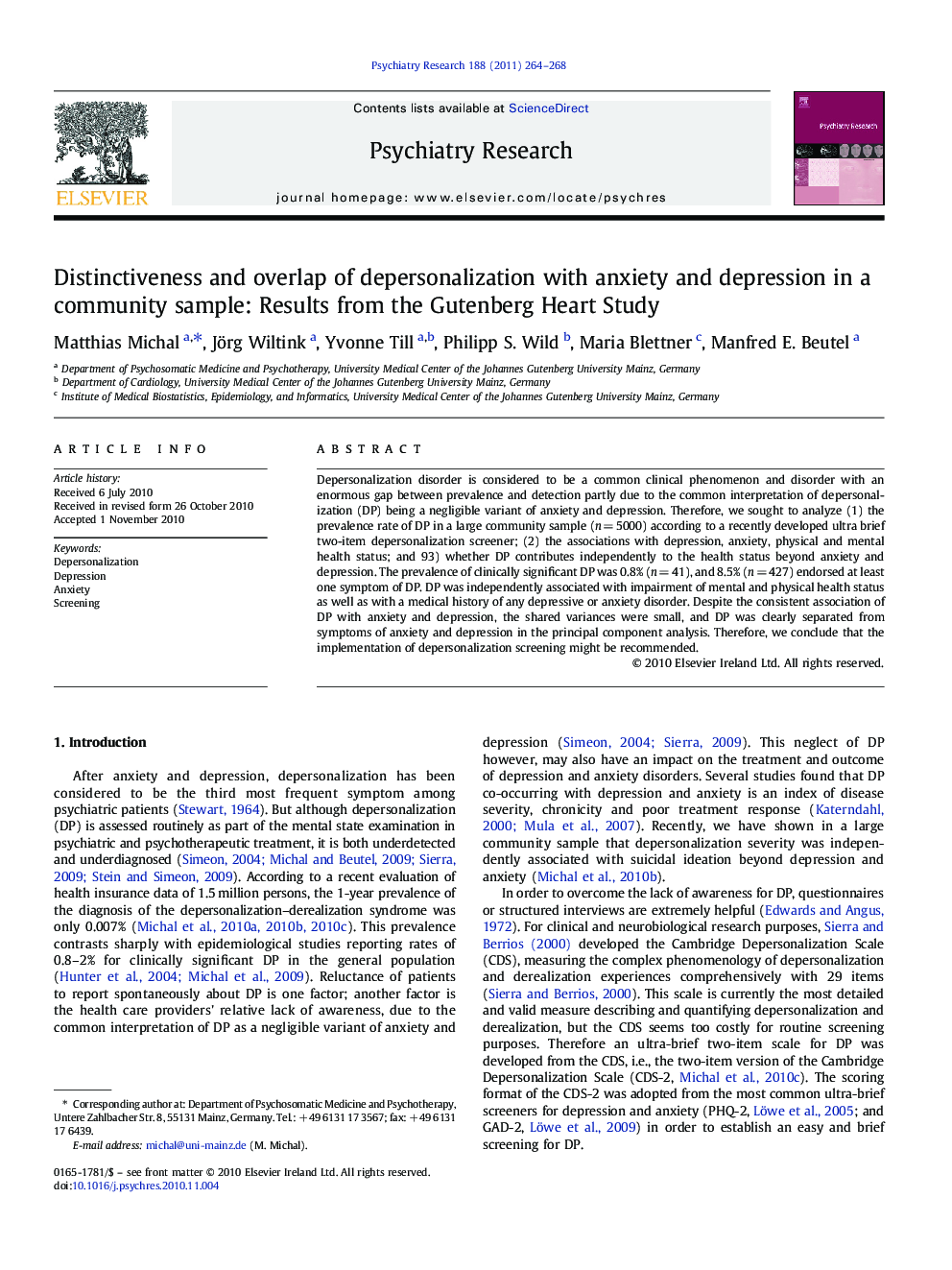| Article ID | Journal | Published Year | Pages | File Type |
|---|---|---|---|---|
| 333789 | Psychiatry Research | 2011 | 5 Pages |
Depersonalization disorder is considered to be a common clinical phenomenon and disorder with an enormous gap between prevalence and detection partly due to the common interpretation of depersonalization (DP) being a negligible variant of anxiety and depression. Therefore, we sought to analyze (1) the prevalence rate of DP in a large community sample (n = 5000) according to a recently developed ultra brief two-item depersonalization screener; (2) the associations with depression, anxiety, physical and mental health status; and 93) whether DP contributes independently to the health status beyond anxiety and depression. The prevalence of clinically significant DP was 0.8% (n = 41), and 8.5% (n = 427) endorsed at least one symptom of DP. DP was independently associated with impairment of mental and physical health status as well as with a medical history of any depressive or anxiety disorder. Despite the consistent association of DP with anxiety and depression, the shared variances were small, and DP was clearly separated from symptoms of anxiety and depression in the principal component analysis. Therefore, we conclude that the implementation of depersonalization screening might be recommended.
